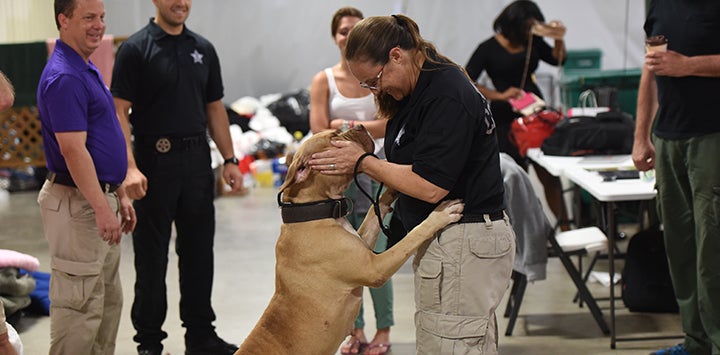
Redefining the role of the ‘dogcatcher’
Say hello to the new face of animal care and control: the field services liaison.
From villainous depictions, such as the one found in Lady and the Tramp, to the punitive-sounding term “dog pound,” the concept of the dogcatcher has been historically antagonistic; however, today’s animal care and control services are redefining their relationship to residents and embracing principles that promote safe, humane communities for people and pets. The outdated role of dogcatcher has been replaced by the community-minded role of the “field services liaison.” Here are five reasons why:
1. We’re a nation of animal lovers.
Gone are the days of animal control “roundups” followed by animals being killed after their legally-mandated hold periods expired. People who have pets and other community members expect humane, ethical animal care practices that include making every effort to reunite families with lost or stray pets and finding new homes for healthy, adoptable pets.
2. We value transparency and innovation.
Thanks in part to the pervasiveness of social media, governmental accountability and transparency from police officers, city council members and animal control officers have become major priorities for communities of all sizes. Residents want to know that their tax dollars are being spent wisely on programs aligned with their values.
3. We champion proactive governance.
In addition to being a nation of animal lovers, we’re also a nation of problem solvers. Times have changed from the days when animal control officers would be dispatched to trap, collect and eventually kill an animal. Local animal services are now focused on identifying animal-related problems and implementing long-term, cost-effective solutions.
4. We believe pets belong in homes — not animal shelters.
Keeping pets in homes and out of shelters is at the heart of the field services liaison role. By minimizing the number of animals entering shelters in the first place, we can stretch already-scarce resources to help the animals most in need.
5. American communities are embracing the no-kill model.
Today, more than 400 documented communities of varying sizes and demographics are considered no-kill communities. Among them are major urban centers like Austin, Texas, and Salt Lake City, Utah. The city of Los Angeles and the entire state of Utah are both on the verge of achieving no-kill for cats and dogs.
For more information, contact Scott Giacoppo at scottg@bestfriends.org.